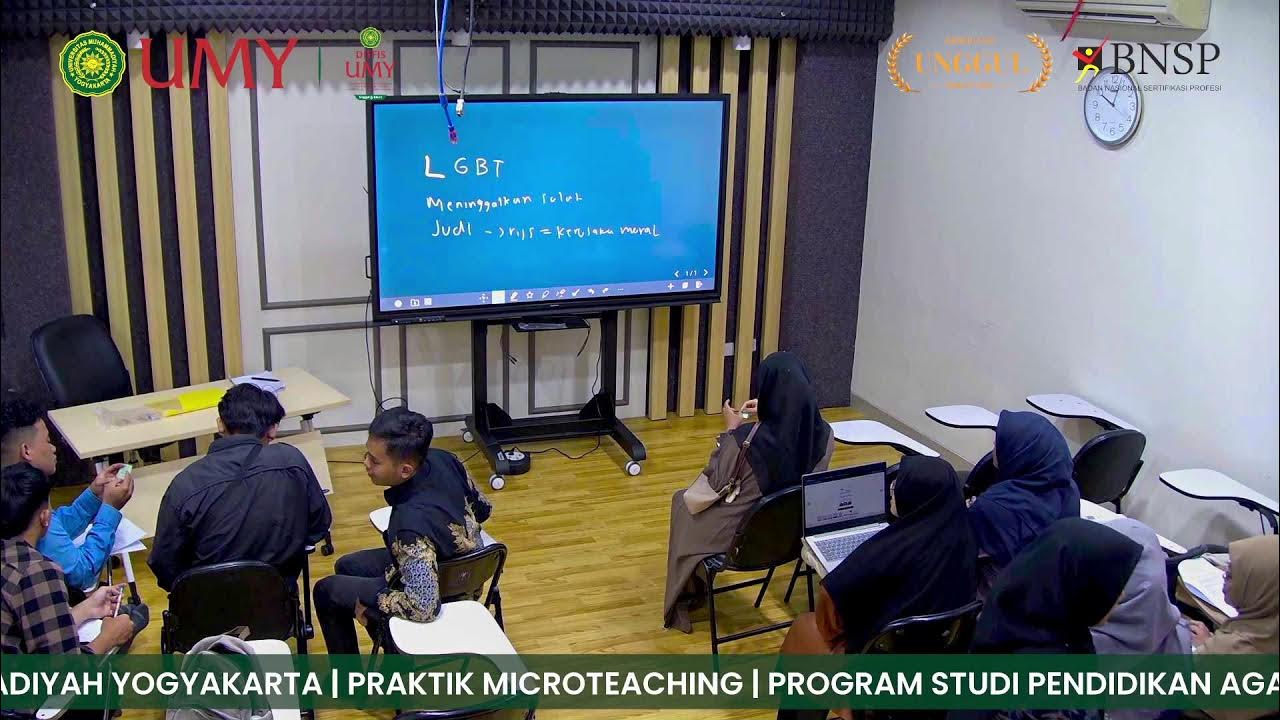Micro Teaching kelas 8 MTS "Akidah Akhlak" tentang Adab Bersosial Media Dalam Pandangan Islam
Summary
TLDRIn this educational classroom session, a teacher engages students in a discussion about social media from an Islamic perspective. After a warm greeting and a prayer, the students are divided into two groups to explore the positive and negative impacts of social media. Group One highlights the benefits such as skill development, communication, and empathy, while Group Two discusses drawbacks like addiction and social isolation. The teacher emphasizes the importance of ethical use of social media, summarizing the lesson with guidelines for respectful online interaction. The session concludes with plans to cover another lesson on the example of the companion Abu Bakr in the next meeting.
Takeaways
- 😀 Social media is an online platform that allows users to participate, share, and create content such as blogs, social networks, forums, and virtual worlds.
- 😀 It's important to be mindful of how social media use can affect our time management, including sleep, learning, and mental health.
- 😀 Overuse of social media can lead to addiction, reduced family interaction, and unhealthy competitive behavior.
- 😀 Social media has the potential to impact self-esteem, making users feel inadequate as they compare themselves to others online.
- 😀 If misused, social media can foster introverted behavior and reduced social interactions in real life.
- 😀 Ethical use of social media involves sharing useful, beneficial information and avoiding spreading rumors or false information.
- 😀 Respectful and polite communication is key to maintaining trust and positive interactions on social media platforms.
- 😀 Positive impacts of social media include promoting skills, communication, and the ability to form meaningful relationships and communities.
- 😀 Negative impacts include addiction, less focus on family, decreased academic performance, and inappropriate behavior online.
- 😀 A key ethical principle is to ensure that your online presence reflects honesty and transparency, avoiding harm to others.
- 😀 The teacher emphasized that social media can be a tool for both positive community building and harmful behavior, depending on how it is used.
Q & A
What is the main focus of the lesson in the video?
-The main focus of the lesson is on the ethical use of social media, viewed through the lens of Islam, as well as the positive and negative effects of social media on young people.
How does the teacher begin the lesson in the video?
-The teacher begins the lesson by greeting the students with 'Assalamualaikum' and asking about their well-being. She encourages them to respond enthusiastically by saying 'Alhamdulillah luar biasa, Allahu Akbar.'
What was the first activity the teacher conducted before starting the lesson?
-The first activity was a prayer led by the class leader. The prayer includes supplications for guidance and blessings.
What are the two main components that make up social media, according to the lesson?
-Social media is made up of two components: 'media' (which refers to tools or communication methods) and 'social' (which refers to society or community).
How long do teenagers typically spend on social media, as mentioned in the video?
-Teenagers spend more than 3 hours per day on social media, which exceeds the recommended limit of 2 hours per day.
What are some of the negative impacts of excessive social media use discussed in the video?
-Excessive use of social media can lead to lack of sleep, disrupted learning processes, negative or harsh comments, unhealthy competition, lack of self-confidence, introverted behavior, and reduced social interactions.
How does the teacher suggest social media can be used positively?
-The teacher suggests that social media can be used positively by sharing beneficial information, building good relationships, and creating communities that provide support and contribute to positive outcomes like learning.
What are some key ethical practices for using social media responsibly, according to the video?
-Key ethical practices include communicating honestly, sharing useful information, being respectful, and using polite language when commenting online.
What was the task the teacher gave to the students regarding the impact of social media?
-The teacher divided the students into two groups. One group was tasked with identifying the positive impacts of social media, while the other group focused on the negative impacts.
What were the positive impacts of social media listed by the first group?
-The positive impacts listed by the first group included promoting advertisements and announcements, enhancing skills and social connections, enabling communication with anyone, and expanding friendships while encouraging empathy and attention to others.
What were the negative impacts of social media listed by the second group?
-The negative impacts listed by the second group included social media addiction, reduced attention to family, replacement of face-to-face social interactions, and decreased academic performance.
How does the teacher conclude the lesson?
-The teacher concludes the lesson by summarizing the key points about social media, such as its definition, ethical use, and impacts, and then announces that the next lesson will cover the role model qualities of the companion Abu Bakar in Islam.
Outlines

此内容仅限付费用户访问。 请升级后访问。
立即升级Mindmap

此内容仅限付费用户访问。 请升级后访问。
立即升级Keywords

此内容仅限付费用户访问。 请升级后访问。
立即升级Highlights

此内容仅限付费用户访问。 请升级后访问。
立即升级Transcripts

此内容仅限付费用户访问。 请升级后访问。
立即升级5.0 / 5 (0 votes)






